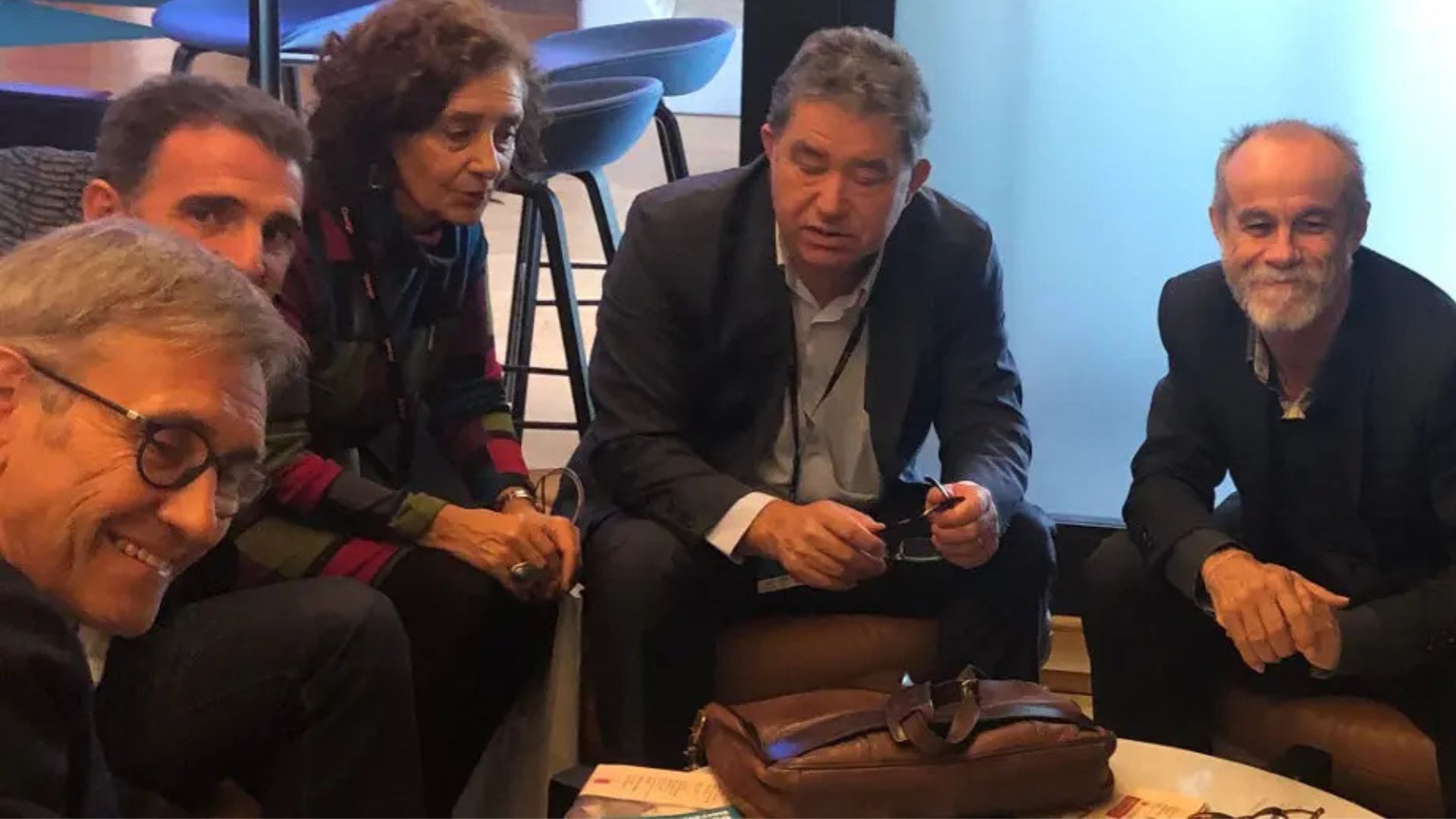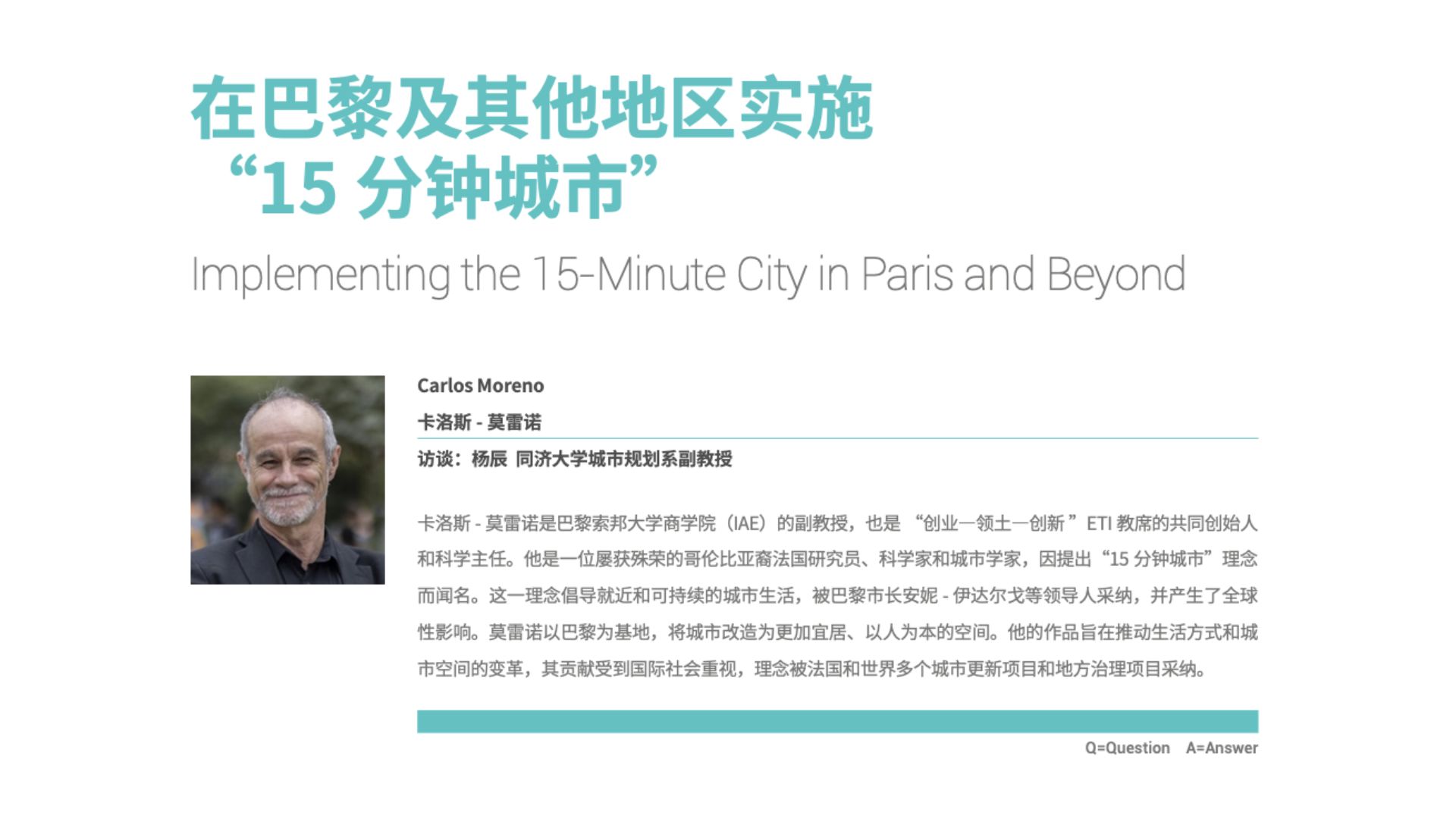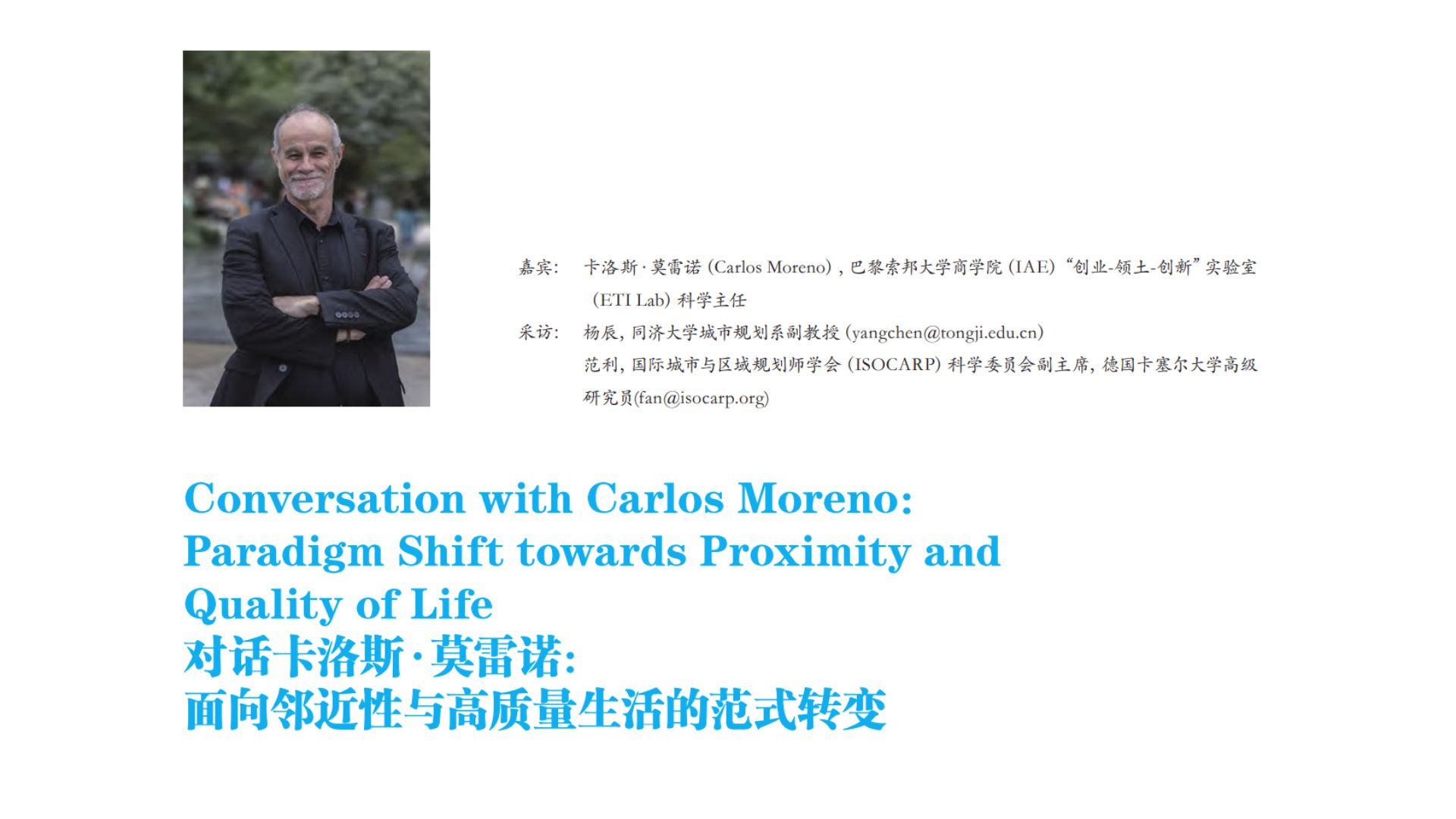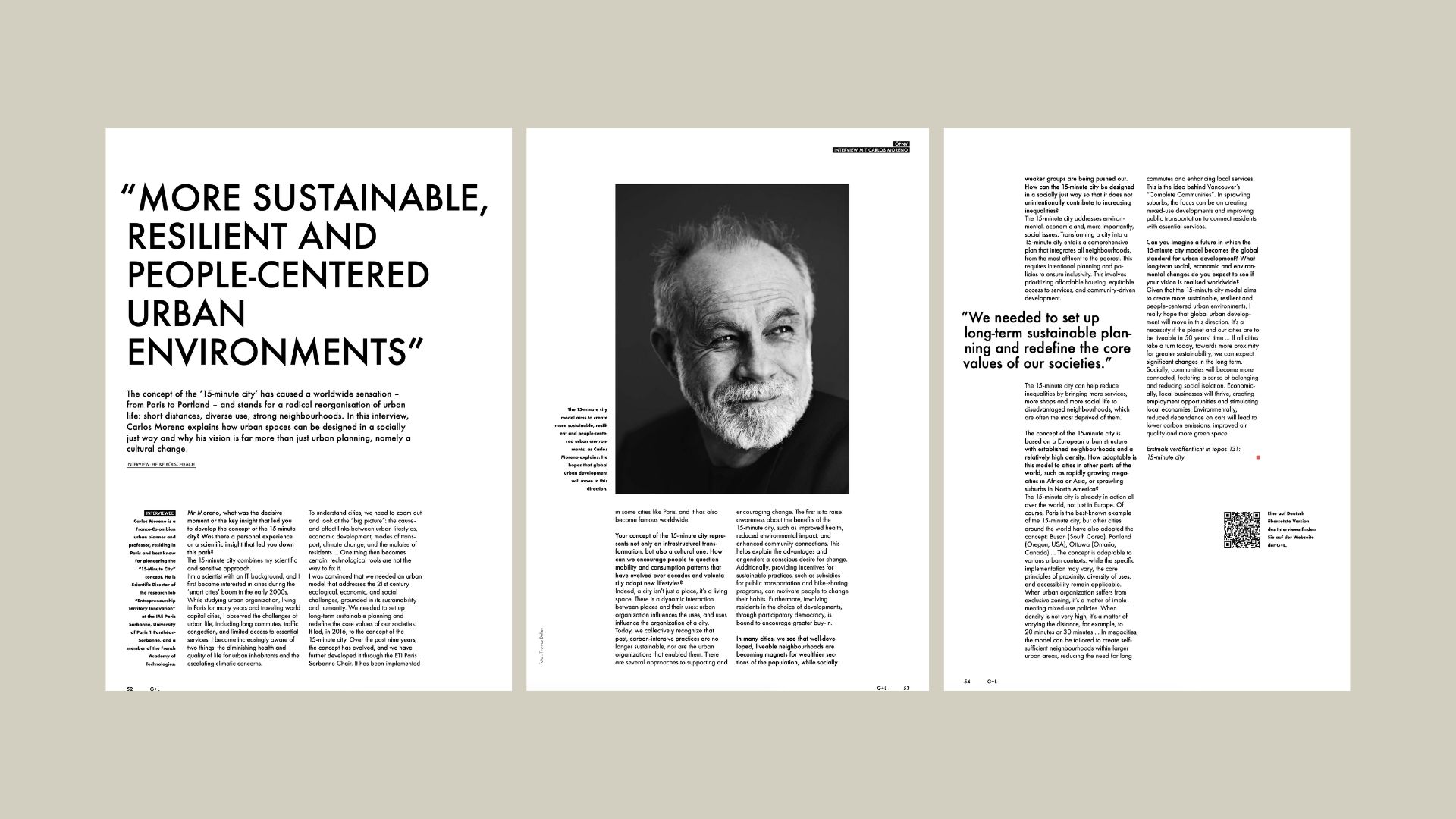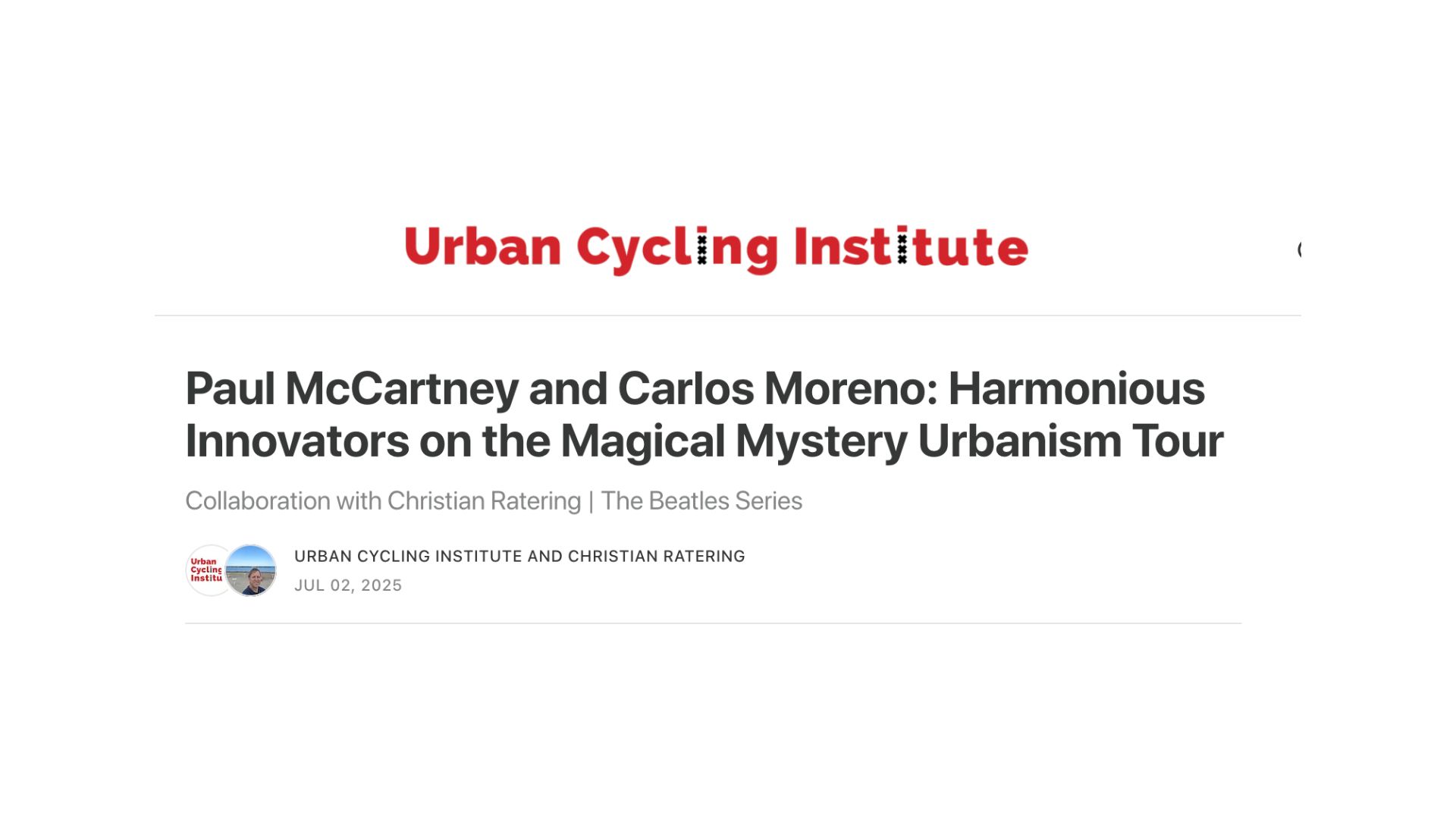Alliancy Web – Le citoyen en plein cœur de la ville intelligente
Propos recueillis par Catherine Moal.
A l’occasion de 5Plus City Forum qui se tient les 20 et 21 mars à Issy-les-Moulineaux (Hauts-de-Seine), nous avons rencontré le Professeur Carlos Moreno (site internet), conseiller scientifique du Président de COFELY INEO, filiale de GDFSUEZ.
El Ciudadano en el corazón de la Inteligencia Urbana
En el 5Plus City Forum, nos reunimos con el profesor Carlos Moreno, asesor científico del Presidente de COFELY INEO, filial de GDFSUEZ. En el programa: su visión sobre la ciudad inteligente, la función de los ciudadanos y políticos y la importancia de la era digital y del incremento de servicios en los cambios que se esperan.
Smart Cities, Smart Grid, Smart Building,… ¿Todo se vuelve “smart” hoy en día?
Hay tres puntos importantes que debemos explicar. En primer lugar, debemos saber que cuando utilizamos “smart” como calificativo para la ciudad, los objetos o las redes eléctricas, rozamos el mundo del marketing. En realidad lo nuevo no es el aspecto “inteligente”, sino que en el siglo XXI disponemos de la capacidad de comunicar a bajo coste, de manera integrable y/o integrada…
El segundo punto es lo que denominamos la ubicuidad de la información. A partir del momento en que podemos enviar información por Internet independientemente de si procede de fuentes muy cercanas al terreno o de nosotros mismos como usuarios, la ubicuidad exige que el mismo objeto sirva para múltiples usos. El teléfono es un buen ejemplo, pero también podemos hablar de la red eléctrica. La información que pasa por un contador sirve, por descontado, para facturar, pero también para calcular picos de carga, de corte o incluso para saber qué barrio o edificio consume más…
El tercer aspecto es que podemos cruzar información para mejorar la dirección, el control, la configuración…. Por ejemplo, el concepto “Smart Grid” nos permite optimizar la carga de una red eléctrica, en la que se han hecho conexiones eléctricas, puesto que disponemos de varias fuentes potenciales de producción de energía. Este cruce de información conllevará nuevas maneras de utilizar la red eléctrica según el contexto, como el borrado, la agregación y otras.
Capilaridad, ubicuidad, datamining… ¿Estos tres elementos son indisociables?
Sí, porque es justamente esta unión lo que hace que sea “smart” y gracias a ella podremos extraer conclusiones para dirigir de forma diferente una red eléctrica, un edificio, un barrio, una ciudad… y optimizar sus usos. Los objetos técnicos no tienen ninguna razón de existir por si solos. Sólo existen por la interdependencia que creamos, no entre ellos, sino en relación con los usos y servicios que decidimos constituir. Por este motivo primero debemos pensar en términos de “funcionalidades” y seguidamente buscar en qué objeto basarse.
¿Puede ilustrarlo con un ejemplo?
Cojamos el caso de Autolib’. El objeto técnico que constituye el coche eléctrico no es un fin en si mismo. Lo que es interesante es que se utiliza en un contexto de energía descarbonizada, con capacidad para evitar la polución, y que los ciudadanos tienen la posibilidad de desplazarse en coches más pequeños… La técnica se pone al servicio de la función “movilidad”, que supera al objeto en sí. Podemos añadir el lugar donde aparcamos, la forma en que optimizamos el recorrido o se gestionan los atascos vía el teléfono móvil o la tablet… Este concepto de interdependencia es primordial.
Entonces, ¿la ciudad inteligente es un concepto “global”?
En ningún caso no es una agregación de objetos técnicos. Es un lugar de interdependencias funcionales que pretenden satisfacer usos y servicios cuando todo va bien, o no. ¿Cómo se puede garantizar una continuidad de los flujos en la ciudad cuando la nieve lo bloquea todo? ¿Cuando se para una línea de metro? ¿Cómo podemos informar a los usuarios? Es lo que llamamos la “resiliencia” de una ciudad, o esta capacidad de poder superar el traumatismo que se ha producido, para garantizar una continuidad mínima de los servicios en un momento dado.
También es una ciudad “frugal”, que optimiza sus gastos energéticos y ofrece más servicios, y al mismo tiempo es más ahorradora gracias a la optimización de las infraestructuras implantadas.
¿Cuál es el lugar del ciudadano en este contexto?
En esta ciudad el administrado debe poder ser actor de lo que pasa en ella, por descontado. Una ciudad “se convierte” en inteligente porque es más participativa, porque da la palabra al ciudadano. Lo que es inteligente son los ciudadanos.
Gracias a la comunicación capilar, actualmente la gente está mucho más informada que antes… Hay, sobre todo, esta capa avanzada de ciudadanos (“digizen” o “smart citizen”), versados en el uso de las nuevas tecnologías, que permiten que toda la comunidad urbana evolucione.
Paralelamente los nuevos servicios se nutren de esta facilidad por conectarse. Muestra de ello es el éxito de los coches con GPS, de la tarjeta Navigo conectada al servicio de bicicletas Vélib’… Todos estos mecanismos de la economía digital tienen un sentido porque existe un uso y un servicio con una gran aceptabilidad social.
¿En qué punto estamos en todas estas evoluciones?
Actualmente apuntamos hacia la etapa de la ubicuidad, de la generalización de lo digital. Pero aún quedan otras etapas por superar. Para estar al servicio del ciudadano debemos crear lo que llamamos una ciudad “plataforma”, es decir, sin tabiques, para poder ofrecer nuevas capacidades de usos y servicios, poder crear nuevos espacios colaborativos.
Por ejemplo, los espacios públicos deberán interactuar mejor con el usuario. El mobiliario urbano de nueva generación permitirá a las personas que esperan el autobús disponer de lugares para informarse sobre la actualidad en pantallas planas, escuchar las noticias “locales”, del barrio… Es necesario que la ciudad ofrezca herramientas de agregación. Evolucionamos hacia una economía de servicios, en la que el objeto desaparece en beneficio del uso. Sin embargo, este servicio se concreta a través de auténticos objetos que deben imaginarse y aplicarse.
¿La prioridad pasa por la creación de espacios colaborativos?
Por supuesto. Lo que hará avanzar la ciudad inteligente es la innovación social y la innovación urbana. Paralelamente debemos dedicar tiempo a crear estos espacios colaborativos para encontrar las soluciones técnicas que deberán implantarse, que serán de diferente tipo. No podemos imponer un objeto técnico sin implicar al usuario. O entonces desconfiará. Debemos conocer de qué modo la aceptación social anticipa la mutación tecnológica…
¿Cómo se consigue?
Mediante la educación, la comunicación y la política, por descontado, pero no sólo con ellos. También se consigue con una visión cultural diferente respecto a la tecnología. La clave está en el diseño aplicativo. Los “diseñadores de aplicaciones” son los que encontrarán el eslabón perdido entre los usuarios y los servicios de la ciudad inteligente con los objetos técnicos necesarios para dar respuesta. El caso del servicio de bicicletas Vélib’ nos vuelve a servir para ilustrar esta idea. “Diseñando” este nuevo servicio, la bicicleta se entiende de una forma diferente. La aceptabilidad se convierte en algo natural. En este aspecto, en Francia vamos por detrás de los anglosajones.
¿Cuál es el papel de la política en este esquema?
La política debe crear un gobierno participativo que permita crear enlaces para ir en búsqueda de las “nuevas” necesidades del ciudadano. Actualmente, la política que genera interés es aquella cuyo atractivo se basa en los tres pilares: innovación social, innovación urbana e innovación tecnológica… No puede faltar ninguno de los tres.
¿Esto cambia muchas cosas para un grupo como COFELY INEO?
Muchísimas. Estamos en una situación en la que vemos que esta economía de servicios evoluciona y que los políticos reflexionan sobre esta problemática. La solución no está en manos de un único industrial, sino de muchos. Esto nos obliga a plantearnos el enfoque de un ecosistema por construir. ¿Cómo podemos ser fuente de propuestas y anticiparnos a los servicios del futuro para que este ecosistema pueda ser creativo y encuentre el ecosistema de la política y de la ciudadanía que gravita alrededor? ¿Cuántos proyectos iniciados se han tenido que abandonar porque las asociaciones de barrio han presentado un recurso…? Debemos tenerlo todo en cuenta.
¿Bastan sus competencias actuales?
En este nuevo contexto las fronteras han explotado en mil pedazos. Debemos integrar competencias en términos de concertación, de diálogo social, y también debemos imaginar nuevos modelos económicos. Francia, al igual que numerosos países occidentales, vive un periodo de crisis. El valor añadido se tiene que buscar… y no se monetiza inmediatamente.
¿Es por ello que sigue la innovación en las start-up?
Evidentemente, en eso consiste mi trabajo, en construir ecosistemas. Es donde reside la diferencia, de los ecosistemas que se crearán, de las interficies que se implantarán. Al contrario de las lógicas tecnocentradas.
En estos ecosistemas, ¿todo el mundo lo ha entendido?
Están obligados a entenderlo. Nosotros, como grupo mundial, orientado a los servicios, tenemos esta cultura de diversidad. Existe una sensibilidad respecto a este punto. Es evidente. Donde es muy difícil que se entienda es en las sociedades muy tecnocéntricas, como IBM o Cisco… Ésta no es la prioridad. Somos nosotros quienes debemos encontrar juntos los compromisos adecuados.
Actualmente los lazos entre lo digital y los usos pasan por integradores que conocen los servicios. Lo digital es sólo un ladrillo, una parte esencial, no lo niego, pero que dominemos lo digital no significa que dominemos los servicios. Y en una ciudad el componente esencial son los servicios.
¿Es esencial encontrar las alianzas adecuadas?
Es la clave. Son intrínsecas e imprescindibles entre los actores potentes de lo digital, los actores de la economía de los servicios y los que, detrás, garantizarán la capilaridad del objeto en su despliegue (digital). Pase lo que pase, habrá infraestructuras, fluidos, flujos, transportes, escuelas, hospitales, supermercados por gestionar… En resumen, la vida real.

The citizen at the heart of urban intelligence
During the 5Plus City Forum, we met Professor Carlos Moreno, scientific advisor to the CEO of COFELY INEO, a GDFSUEZ subsidiary company. On the menu: His vision of a smart city, the part played by citizens and elected representatives as well as the importance of the digital revolution and the rise of services in the changes to be expected.
Smart Cities, Smart Grids, Smart Buildings… Is everything becoming “Smart” today?
There are three important points that need to be clarified. First of all, using the term “smart” like this, for cities, objects, power grids or whatever, looks very much like marketing. In actual fact, it is not the “smart” side that is new, but rather the fact that now, in the twenty first century, we have the capacity to communicate at low cost, using tools that we can take on board and/or that are on board.
Secondly, there is what is known as data ubiquity. From the moment data can be woven together, using sources very close to the field, or from ourselves as users, the ubiquitous side means that the same object can serve many uses. A classic case is the telephone, but this also applies to the power grid. The data provided by an electricity meter is of course used to bill a customer, but also to calculate peak loads, allow load shedding or to identify which neighbourhood or building uses the most power, etc.
The third point is that data can be cross referenced so as to better manage, control, configure, etc. For example, by applying this to the world of “Smart Grids”, we can optimise the loading on an electric grid that we have actually turned into “multiple” electric grids as we have a number of potential sources of electric power. This cross referencing of data will lead to new ways of using the grid, such as smoothing, aggregating and more, depending on the context.
Capillarity, ubiquity, datamining. Are these three aspects indissociable?
Yes, for it is precisely this combination that is “smart” and thanks to these three, we can draw conclusions so as to manage a grid, a building, a neighbourhood, a city, etc. differently and to optimise uses. Technical objects have no existence by themselves. They exist only by the interdependence that is created, not between them but in relation to the uses and services that we decide to build. This is why we need to reason in terms of “functions” first and foremost, and then go looking for the object needed to support it.
Do you have an example of this?
Let’s consider Paris’ electric car rental programme, Autolib’. The technical aspect is that an electric car is not an end in itself. What is interesting is that it is used in a context of carbon-free energy, with the capacity to not pollute and that it offers citizens the ability to move around in smaller vehicles… Technology is made to serve the “mobility” function which is greater than the object itself. To this we can add the place where you park, how you optimise your trip or handle traffic jams using a mobile phone or tablet… This concept of interdependence is an essential one.
So a smart city is an “overall” concept?
It is certainly not a collection of technical objects! It is an area of functional interdependencies, aimed at providing uses and services when all is well, or not. How do you ensure continuous motion flows in a city when snowfall has brought everything to a standstill? When a Metro line grinds to a halt? How do you inform users? This is what is called a city’s “resilience”, the capacity to rise above any trauma that occurs, to guarantee that at least minimal services continue to function at any given time.
An intelligent city is also a “frugal” one that optimises its energy usage and offers more services, while spending less, by optimising the infrastructure systems deployed.
So where do citizens fit in all this?
In a city like this, a citizen must of course be able to play a part in what happens. A city “becomes” intelligent because it is more participative, because it offers the ability to speak out. It is the citizens that are intelligent.
Today, capillary communication means that people are way better informed than before. And especially, there is this layer of advanced “digizens” or “smart citizens” that are used to using new technologies and that lead the evolution affecting the entire urban community.
In parallel, new services feed off this ease of connection. Look at the success of cars with GPS SatNav systems, the Navigo (transport pass) coupled with Vélib’ self-service bike rentals. All of these digital economy mechanisms take on meaning because there is a usage and a service with strong social acceptability.
So where do we stand today, with all of these evolutions?
Currently, we are seeing the ubiquitous power stage, where all things digital become generalised. But many more steps remain. To serve citizens, we need to create what we call a “platform” city, an open one with no barriers, so as to offer new capacities for uses and services, so as to create new collaborative areas.
For example, public areas will need to better interact with users. New generation urban furniture will ensure that people waiting for a bus have a place to read news off a flat screen, listen to “local” or neighbourhood news, and more. Cities and towns need to offer tools for aggregating. We are evolving towards a service based economy, where objects are taking a back seat to usage. That said, this service takes shape thanks to real life objects that need to be imagined and put into place.
Is the priority creating collaborative spaces?
Of course. What will drive an intelligent city is social innovation and urban innovation. In parallel, we need to spend time on creating collaborative spaces, so as to better identify the technical solutions to be implemented, and these will be of different kinds. We cannot impose a technical object without involving users. Or else, they will be wary of it. It is necessary to know how social acceptability anticipates technological mutations…
How do we do this?
This is especially education, communication and politically driven, but not only. It also requires a different cultural approach compared with technology. The key lies in application design. It is the “application designers” who will make up the missing link between uses and services in the intelligent city, with the essential technical objects needed to answer the need. Once again, the Vélib’ self-service bike rentals well illustrate this idea. When this service was “designed”, bikes were seen differently. And acceptability then becomes natural. In France, we are behind on this point compared with the English speaking world.
What happens to the political sphere in this scheme of things?
It is up to policy makers to create a participative governance that will allow links to form, to reach out to the citizen’s “new” needs. It is easy to see that now, a policy that generates attractivity is a policy that is successful insomuch as this attractivity is based on the three pillars that are social innovation, urban innovation and technological innovation. All three are needed, not one can be missing.
Does this change much for a company like COFELY INEO?
Enormously! We are in a situation where we see this services economy evolving and elected officials thinking through these issues. No one company has the solution, but MANY companies do. This requires us to think in terms of an ecosystem to be built. How can we put forward proposals, anticipate on the services of tomorrow and more, so that this ecosystem can become a creative one and meet up with the politician’s ecosystem and the citizens that fit around it all. Just look at how many projects already started have been stopped by local resident’s associations filing protests. Everything has to be looked at.
Are your current skills enough?
In this new landscape, old borders have been blown away. We need to bring in skills in terms of consultation and social dialogue, but we also need to imagine new economic models. France, like many other western nations is going through a period of crisis. The added value in this approach needs to be found, and it cannot be turned into cash value right away.
Is this also why you watch innovation in start-ups?
Absolutely! This is precisely my job! I have ecosystems to build. The difference will come from this, from ecosystems being created, from the interfaces that will fit into place. Completely the opposite to tech-centred approaches.
In these ecosystems, has everyone understood this?
They must hear it. We as a worldwide, service oriented company, we have this melting pot culture. There is a sensitivity to this. Obviously! Where it is harder to find a listening ear is in highly tech-centred companies like IBM or Cisco as this is not their priority in the field. It is up to us to work together to find the right compromise.
Today, links between the digital world and uses pass through integrators who know services. Digital technology is just a building block, an essential and necessary one of course, but just because you can do digital doesn’t mean you can do services. And at the city level, the essential component is services.
Finding the right alliances is becoming essential?
It’s the key! They are integral and unavoidable, between powerful digital players and service economy specialists and those who behind the scenes will ensure that the object spreads through its deployment (digital aspects). Whatever happens, there will be infrastructures, fluids, flows, transportation, schools, hospitals, supermarkets, etc. to manage. It’s simply real life!

